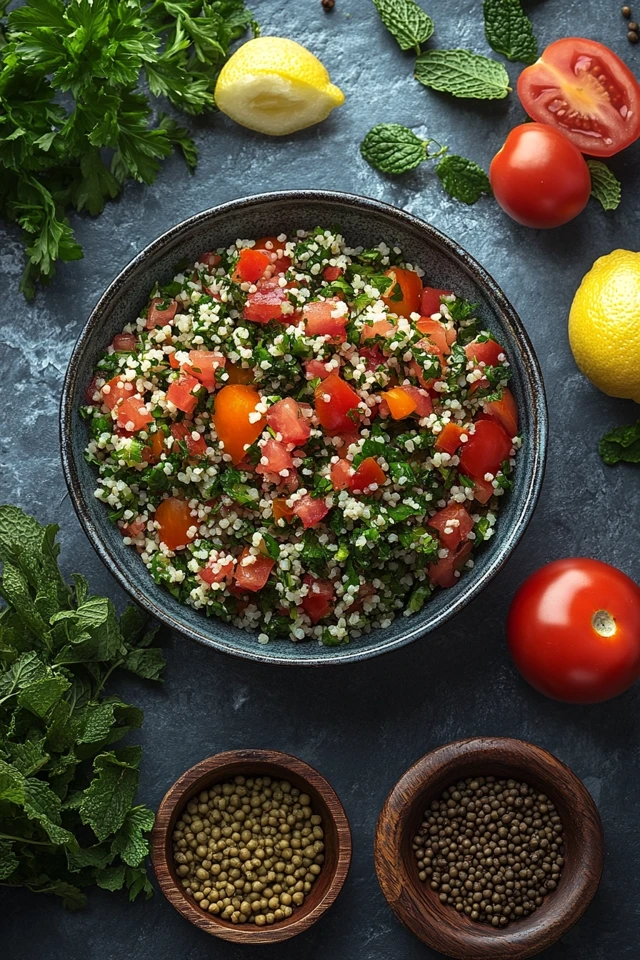Introduction
Experience the vibrant and refreshing flavors of Lebanese Vegan Tabbouleh Salad: Fresh & Herbaceous! This classic Middle Eastern salad is a delightful medley of finely chopped vegetables, aromatic herbs, and wholesome grains, all brought together with a zesty lemon dressing. Perfect for summer picnics, light lunches, or as a side dish for your favorite Mediterranean meals, this vegan tabbouleh is both nutritious and irresistibly delicious.
Tabbouleh, a staple in Lebanese cuisine, is celebrated for its bright colors and fresh ingredients that not only tantalize the taste buds but also provide a powerhouse of nutrients. Our vegan version stays true to tradition by incorporating plant-based components that enhance its health benefits without compromising on authentic flavors. Whether you’re a seasoned vegan or simply seeking a healthy and flavorful salad, this Lebanese Vegan Tabbouleh Salad offers a perfect balance of textures and tastes that cater to all palates. In this comprehensive guide, we’ll delve into the benefits of vegan tabbouleh, provide a detailed recipe, and share tips and variations to customize it to your liking. Let’s embark on a culinary journey to create a fresh and herbaceous Lebanese vegan tabbouleh salad that will become a cherished favorite in your kitchen!
Why Choose Lebanese Vegan Tabbouleh Salad?
Opting for a Lebanese Vegan Tabbouleh Salad offers a multitude of benefits that cater to health, ethical, and culinary preferences. Here’s why this salad should become a staple in your meal planning:
Health-Conscious Choice
- Nutrient-Rich: Packed with fresh parsley, mint, tomatoes, cucumbers, and bulgur wheat, this salad provides a balanced mix of vitamins, minerals, and antioxidants essential for overall health.
- Heart-Healthy Fats: The use of extra virgin olive oil introduces heart-healthy monounsaturated fats, promoting cardiovascular health and satiety.
- High in Fiber: Whole bulgur wheat and an abundance of vegetables contribute to a high fiber content, aiding in digestion and promoting sustained energy levels.
- Low in Calories: This salad is naturally low in calories, making it an excellent choice for those looking to maintain or lose weight without sacrificing flavor.
Ethical and Sustainable
- Plant-Based: Embracing a plant-based meal reduces your carbon footprint and supports sustainable eating practices, benefiting both your health and the environment.
- Cruelty-Free: Free from animal products, this tabbouleh aligns with compassionate lifestyle choices and ethical food preferences.
Versatile and Customizable
- Flavor Adjustments: Easily tweak the seasoning and ingredients to suit your taste preferences, whether you prefer a more lemony zest or a hint of spice.
- Ingredient Flexibility: Substitute bulgur wheat with quinoa or couscous for a gluten-free option, and add various vegetables or herbs based on availability and personal preferences, making the recipe adaptable to various dietary needs.
- Serving Options: Serve as a standalone meal, alongside grilled vegetables or proteins, or as part of a larger Mediterranean-inspired spread for added variety and balance.
Delicious and Satisfying
- Balanced Flavors: The combination of tangy lemon juice, savory herbs, and crunchy vegetables creates a balanced and satisfying flavor profile that delights the palate.
- Elegant Presentation: A well-prepared tabbouleh not only tastes amazing but also looks visually stunning, making it perfect for both everyday meals and special occasions.
Ingredients
Creating a Lebanese Vegan Tabbouleh Salad involves a harmonious blend of fresh herbs, crunchy vegetables, wholesome grains, and a zesty lemon dressing. Here’s what you’ll need:
For the Salad
- Bulgur Wheat: 1 cup (fine or medium grind)
- Boiling Water: 2 cups
- Fresh Parsley: 2 cups, finely chopped
- Fresh Mint Leaves: 1 cup, finely chopped
- Tomatoes: 2 large, diced
- Cucumbers: 1 large, diced
- Green Onions: 4, finely sliced
- Lemon Juice: 1/4 cup (freshly squeezed)
- Extra Virgin Olive Oil: 1/3 cup
- Salt: 1 teaspoon (adjust to taste)
- Black Pepper: 1/2 teaspoon
- Ground Sumac: 1/2 teaspoon (optional, for a tangy flavor)
- Pomegranate Seeds: 1/4 cup (optional, for garnish)
Optional Add-ins and Toppings
- Quinoa: Substitute bulgur wheat with quinoa for a gluten-free option
- Couscous: Another gluten-free alternative to bulgur wheat
- Red Bell Pepper: Finely diced, for added sweetness and color
- Radishes: Thinly sliced, for a peppery crunch
- Avocado: Sliced or diced, for creaminess
- Toasted Pine Nuts: 2 tablespoons, for added crunch
- Feta-Style Vegan Cheese: Crumbled, for a tangy finish
Ingredient Breakdown
- Bulgur Wheat: Serves as the hearty and nutritious base, providing complex carbohydrates and fiber.
- Fresh Parsley and Mint: Infuse the salad with bright, aromatic flavors that are quintessential to Lebanese cuisine.
- Tomatoes and Cucumbers: Add juiciness and crunch, enhancing the salad’s texture and nutritional value.
- Green Onions: Bring a mild onion flavor that complements the herbs and vegetables.
- Lemon Juice and Olive Oil: Create a tangy and rich dressing that ties all the ingredients together.
- Ground Sumac: Offers a unique tangy flavor that elevates the overall taste profile.
- Pomegranate Seeds: Add a burst of sweetness and a pop of color, making the salad visually appealing.
Instructions
Preparing a Lebanese Vegan Tabbouleh Salad is straightforward and yields a delicious, nutritious meal perfect for any occasion. Follow these step-by-step instructions to create a fresh and herbaceous tabbouleh in about 30 minutes.
Step 1: Prepare the Bulgur Wheat
- Rinse the Bulgur:
- Place 1 cup of bulgur wheat in a large bowl. Rinse it under cold water to remove any impurities.
- Soak in Boiling Water:
- Pour 2 cups of boiling water over the rinsed bulgur. Stir briefly, then cover the bowl with a lid or plastic wrap.
- Let it Sit:
- Allow the bulgur to soak for about 20 minutes, or until it has absorbed all the water and softened. If using quinoa or couscous, follow the package instructions for cooking.
- Drain Excess Water:
- If there’s any remaining water, drain it using a fine-mesh sieve or press gently with a fork.
Step 2: Prepare the Vegetables and Herbs
- Chop the Parsley and Mint:
- Finely chop 2 cups of fresh parsley and 1 cup of fresh mint leaves. Aim for small, uniform pieces to ensure even flavor distribution.
- Dice the Tomatoes and Cucumbers:
- Cut 2 large tomatoes and 1 large cucumber into small, uniform dice.
- Slice the Green Onions:
- Finely slice 4 green onions, including the white and light green parts.
Step 3: Make the Dressing
- Mix Lemon Juice and Olive Oil:
- In a small bowl, whisk together 1/4 cup of freshly squeezed lemon juice and 1/3 cup of extra virgin olive oil until well combined.
- Season the Dressing:
- Add 1 teaspoon of salt, 1/2 teaspoon of black pepper, and 1/2 teaspoon of ground sumac (if using) to the dressing. Whisk again to incorporate all the flavors.
Step 4: Assemble the Tabbouleh
- Combine Ingredients:
- In a large mixing bowl, combine the soaked and drained bulgur wheat, chopped parsley, chopped mint, diced tomatoes, diced cucumbers, and sliced green onions.
- Add the Dressing:
- Pour the prepared dressing over the salad. Toss gently to ensure all ingredients are evenly coated with the dressing.
- Adjust Seasoning:
- Taste the salad and adjust the seasoning with additional salt, pepper, or lemon juice if needed.
Step 5: Let it Marinate
- Chill and Marinate:
- Cover the bowl and refrigerate the tabbouleh for at least 30 minutes to allow the flavors to meld together. This step enhances the overall taste and ensures a well-balanced salad.
- Stir Before Serving:
- Before serving, give the salad a good stir to redistribute any settled dressing.
Step 6: Serve and Garnish
- Plate the Salad:
- Transfer the tabbouleh to a serving platter or individual bowls.
- Add Optional Toppings:
- Garnish with pomegranate seeds, toasted pine nuts, sliced avocado, or crumbled vegan feta-style cheese for added texture and flavor.
- Serve with Pita Bread:
- Accompany the salad with warm pita bread or flatbread for a complete and satisfying meal.
Tips and Variations
Enhance your Lebanese Vegan Tabbouleh Salad with these helpful tips and creative variations:
1. Customize the Dressing
- Herbal Infusion: Add a handful of fresh dill or cilantro to the dressing for an extra burst of herbal flavor.
- Spicy Kick: Incorporate a pinch of red pepper flakes or a splash of hot sauce for a subtle heat.
2. Experiment with Grains
- Quinoa: Substitute bulgur wheat with quinoa for a gluten-free and protein-rich alternative.
- Farro: Use farro for a chewy texture and nutty flavor.
3. Incorporate More Vegetables
- Red Bell Pepper: Finely dice red bell pepper for added sweetness and color.
- Radishes: Thinly slice radishes for a peppery crunch.
- Sweet Potatoes: Add roasted sweet potatoes for a hearty twist.
4. Add Protein
- Chickpeas: Mix in roasted chickpeas for an extra protein boost and crunchy texture.
- Tofu: Add cubes of marinated and baked tofu for a more substantial salad.
5. Enhance Presentation
- Layered Platter: Arrange the tabbouleh on a large, shallow platter with colorful toppings for an elegant presentation.
- Individual Bowls: Serve in individual bowls with separate toppings, allowing guests to customize their servings.
6. Make It Ahead
- Prep in Advance: Prepare the tabbouleh a day ahead. Store it in an airtight container in the refrigerator. The flavors will deepen overnight, making it even more delicious.
- Store Properly: Keep the dressing separate until ready to serve to maintain the salad’s freshness and crunch.
7. Incorporate Superfoods
- Chia Seeds: Sprinkle chia seeds over the salad for an omega-3 boost.
- Avocado: Add diced avocado for healthy fats and creaminess.
8. Adjust the Consistency
- Moisture Level: If the salad is too dry, add a little more olive oil or lemon juice. If it’s too wet, add more bulgur wheat or let it sit uncovered for a few minutes to absorb excess moisture.
9. Flavor Boosters
- Sumac: Increase the amount of sumac for a tangier flavor.
- Tahini Dressing: Replace some of the olive oil with tahini for a creamy, nutty dressing.
10. Serve with Additional Sides
- Hummus: Pair the tabbouleh with a side of hummus for added protein and creaminess.
- Roasted Vegetables: Serve alongside roasted vegetables like eggplant, zucchini, or bell peppers for a more substantial meal.
Nutritional Information
Understanding the nutritional profile of your meals helps you make informed dietary choices. Here’s the approximate nutritional breakdown for one serving of the Lebanese Vegan Tabbouleh Salad (serves 6):
Per Serving:
- Calories: 180 kcal
- Protein: 5g
- Carbohydrates: 25g
- Fiber: 5g
- Fat: 7g
- Saturated Fat: 1g
- Sugar: 4g
- Sodium: 400mg
Nutritional Highlights:
- High in Fiber and Vitamins: Bulgur wheat and fresh vegetables provide a substantial fiber boost, promoting digestive health and sustained energy levels.
- Healthy Fats: Olive oil contributes heart-healthy monounsaturated fats essential for cardiovascular health and satiety.
- Vitamins and Minerals: Fresh parsley, mint, tomatoes, and cucumbers supply vitamins A and C, potassium, iron, and magnesium, supporting various bodily functions.
- Antioxidants: Ingredients like garlic, lemon juice, and fresh herbs are loaded with antioxidants that combat oxidative stress and support immune function.
Adjusting Nutritional Content:
- Lowering Calories: Reduce the amount of olive oil used or opt for a spray oil to minimize fat content. Incorporate more low-calorie vegetables like broccoli or mushrooms for added volume without extra calories.
- Increasing Protein: Add more chickpeas or incorporate additional protein-rich ingredients like tofu or lentils into the salad for an extra protein boost.
- Reducing Sodium: Use low-sodium soy sauce or tamari and adjust the added salt based on your dietary needs. Incorporate more herbs and spices to enhance flavor without relying solely on salt.
Conclusion
The Lebanese Vegan Tabbouleh Salad: Fresh & Herbaceous is a perfect blend of health-conscious ingredients and vibrant, satisfying flavors, making it an ideal addition to any meal plan. This dish not only caters to vegan and gluten-free dietary needs but also provides a wholesome and visually stunning option that supports your health and well-being.
Whether you’re preparing a family dinner, hosting a festive party, or looking for a nutritious and elegant meal, this tabbouleh offers versatility, ease of preparation, and endless customization options to suit your preferences. Embrace the bright, herbaceous flavors of Lebanese cuisine with the wholesome goodness of plant-based ingredients in this delightful recipe that celebrates the best of wholesome and flavorful vegan cooking.
Enjoy the process of chopping, mixing, and tossing your salad, and savor each bite knowing you’re nourishing your body with wholesome, plant-based goodness. Here’s to creating and enjoying meals that bring joy, health, and a burst of color to your table!
Picture Gallery
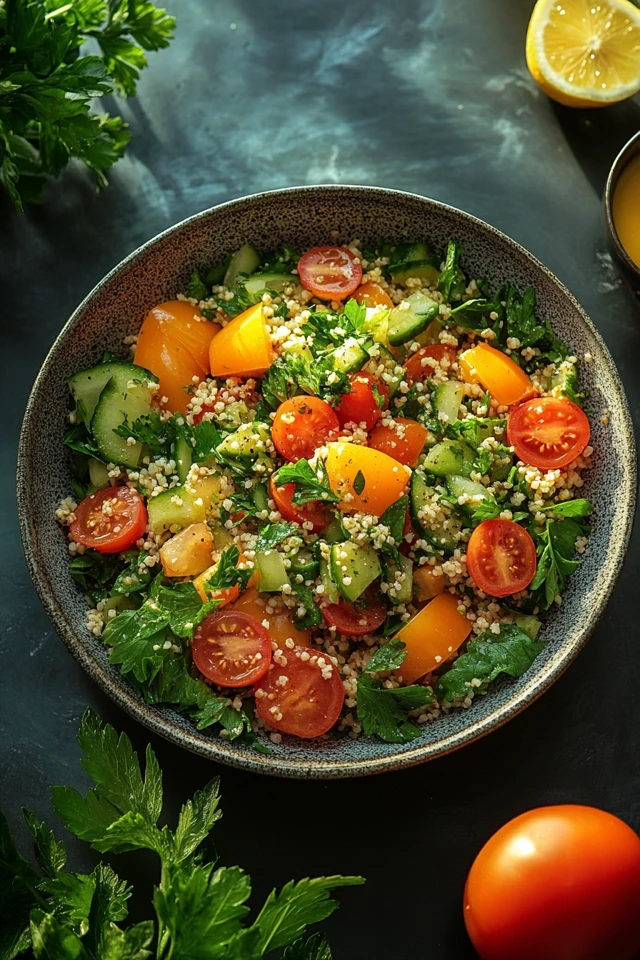
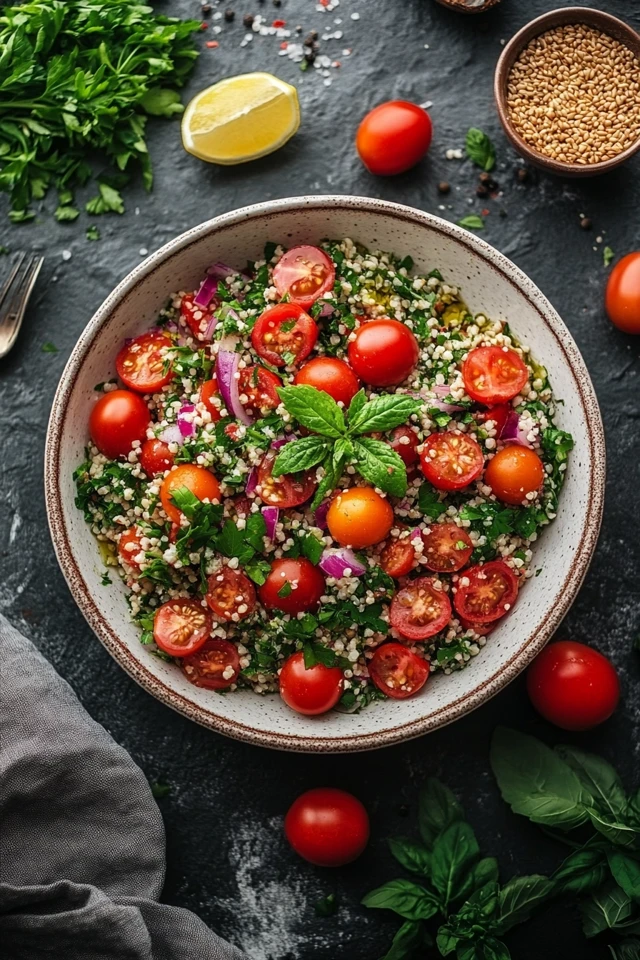
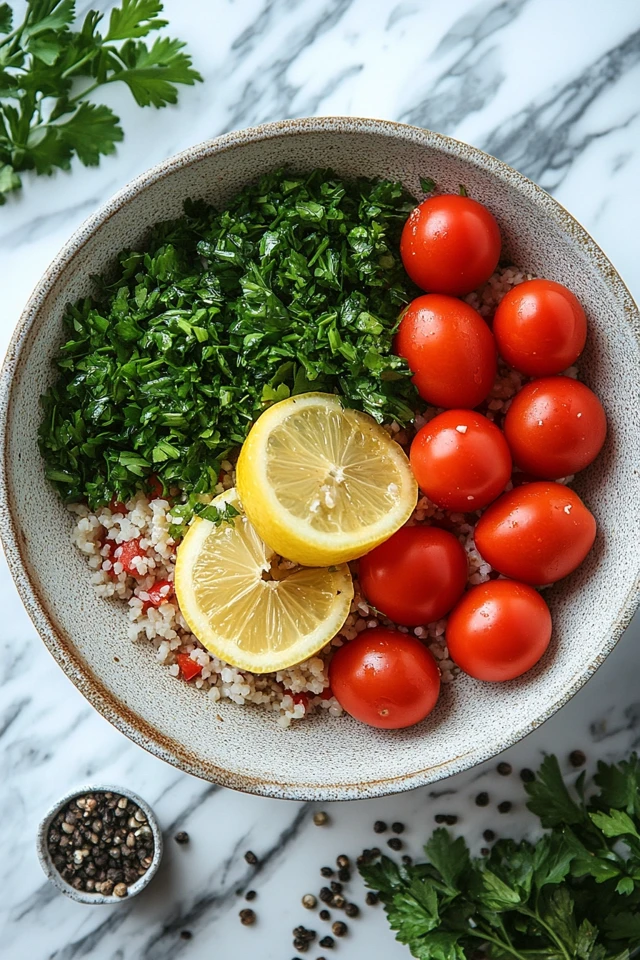
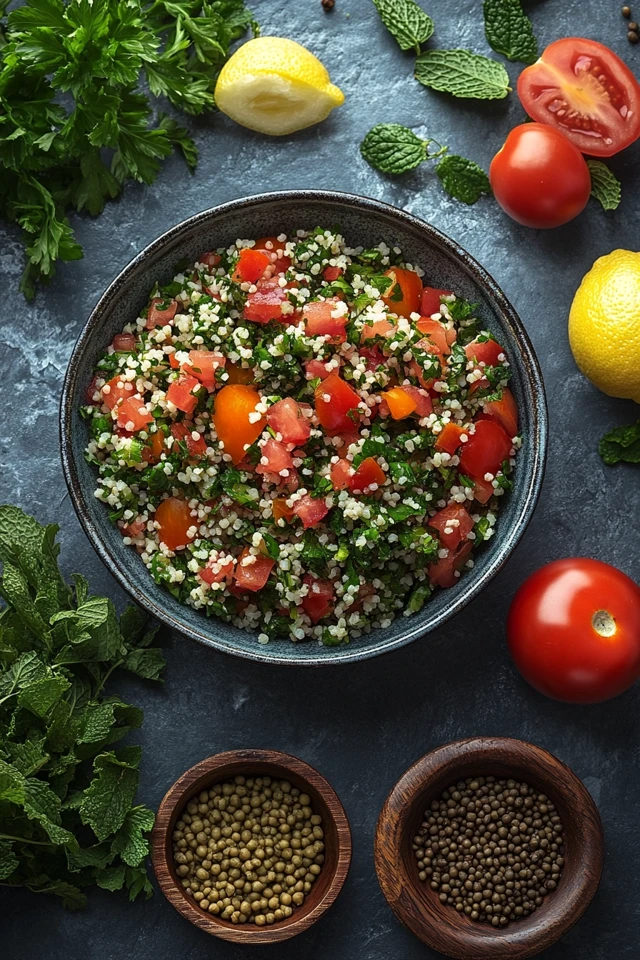
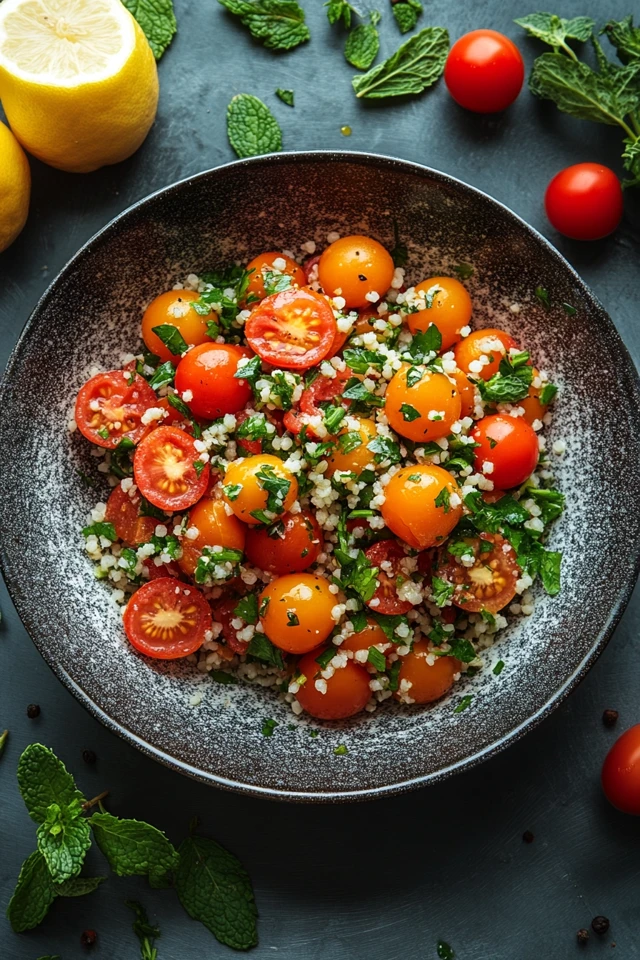
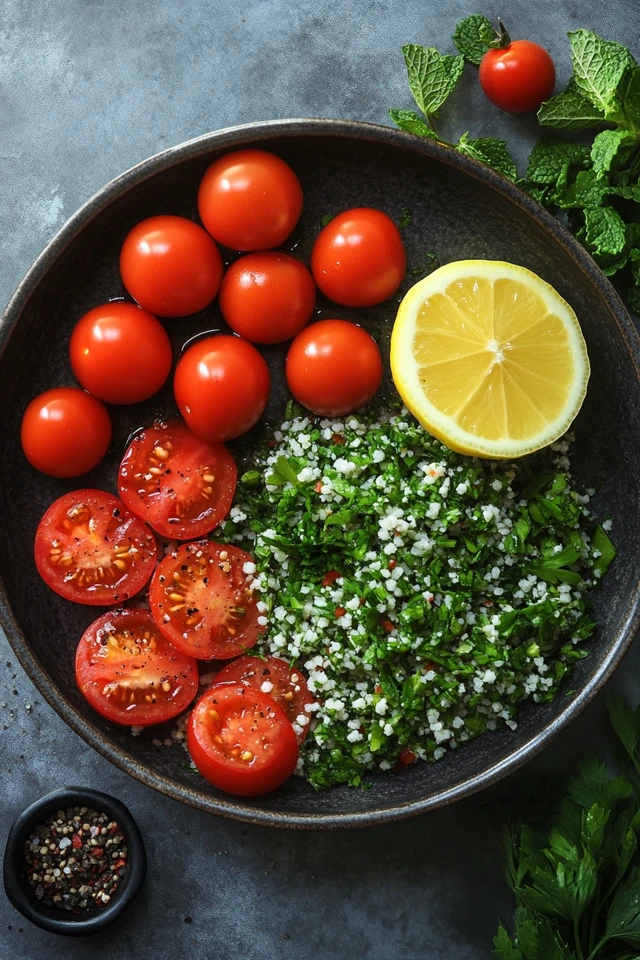
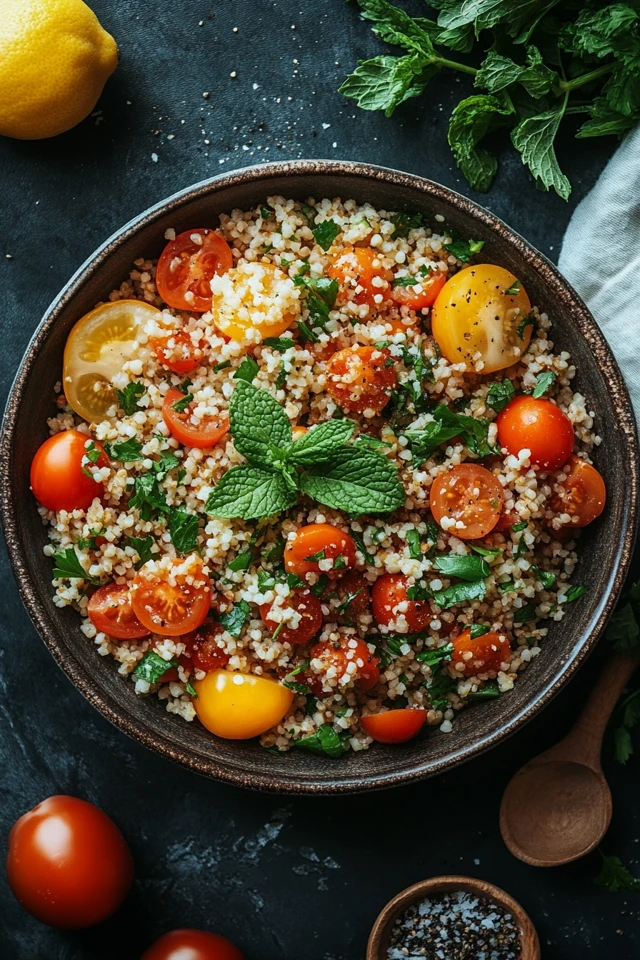
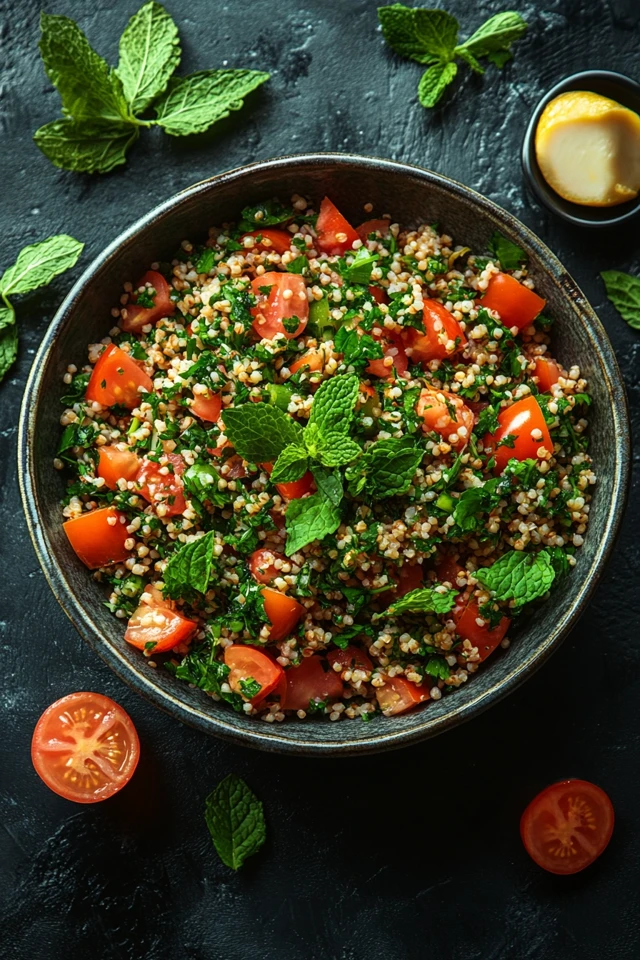
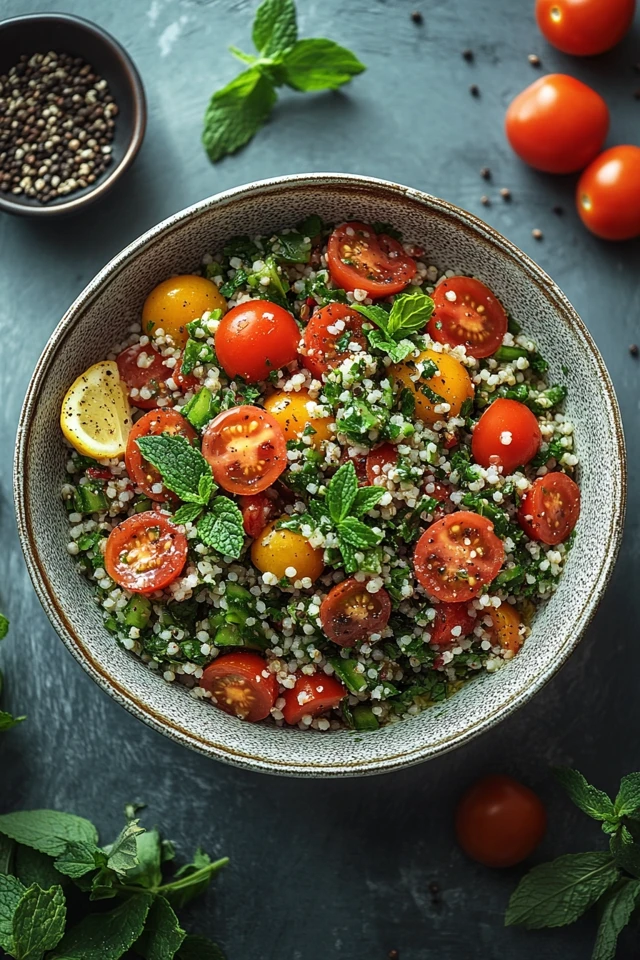
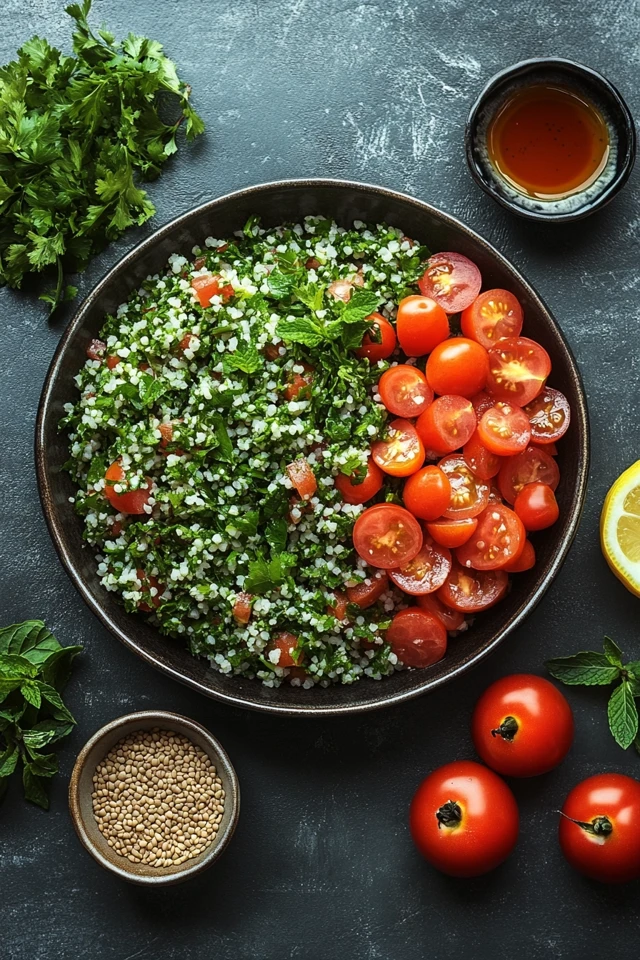
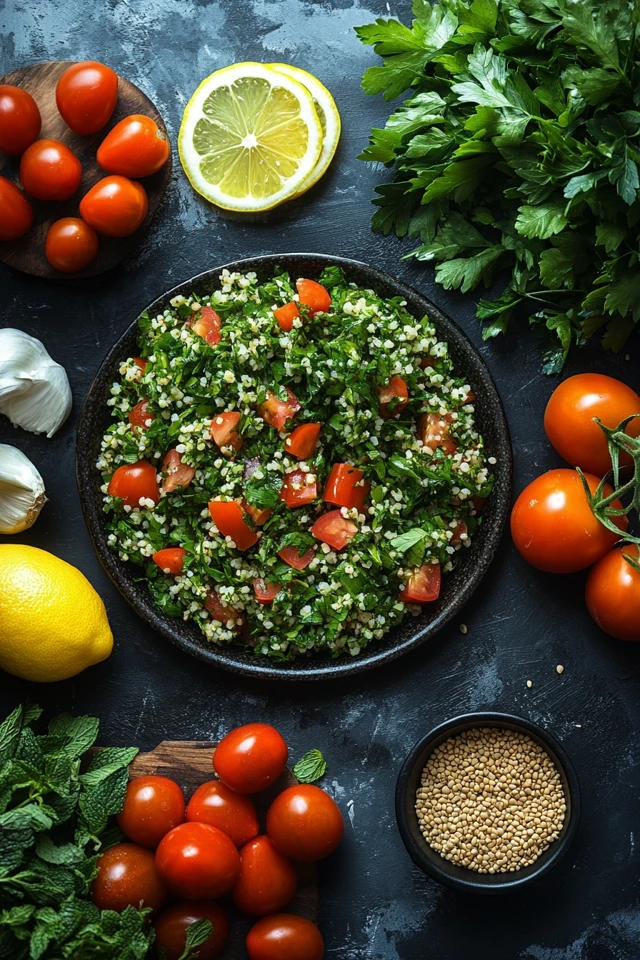
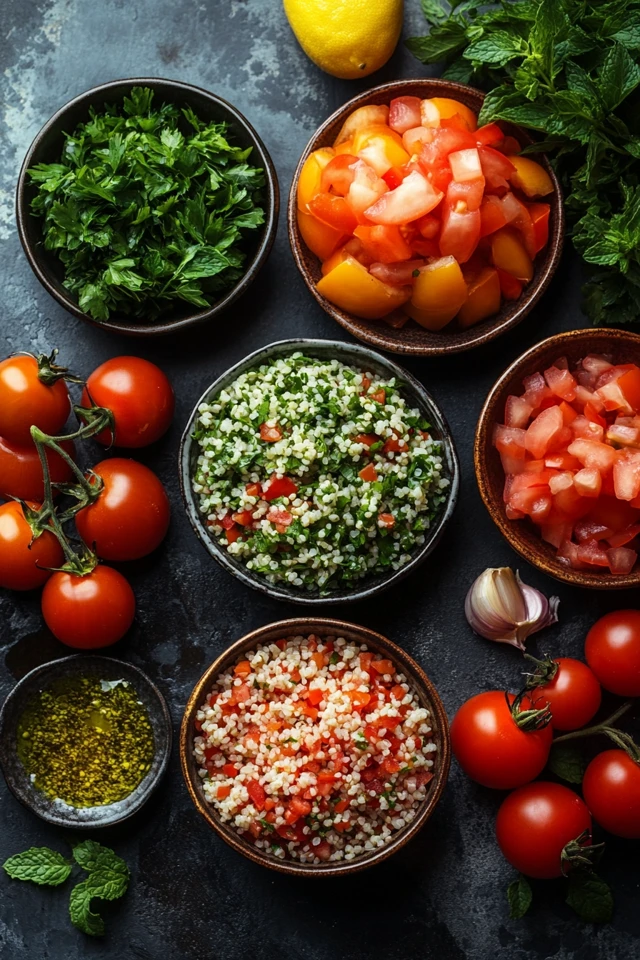
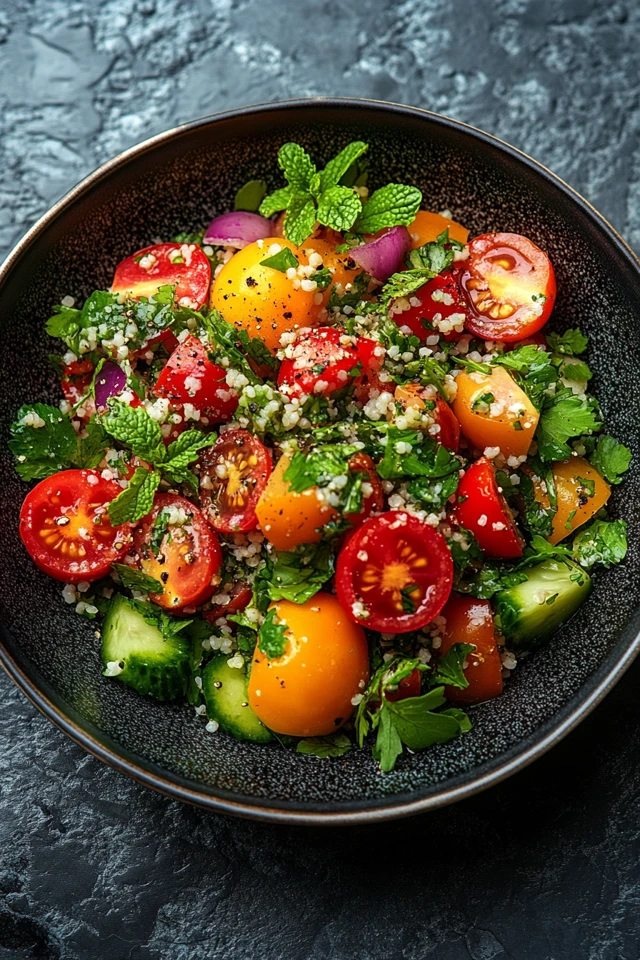
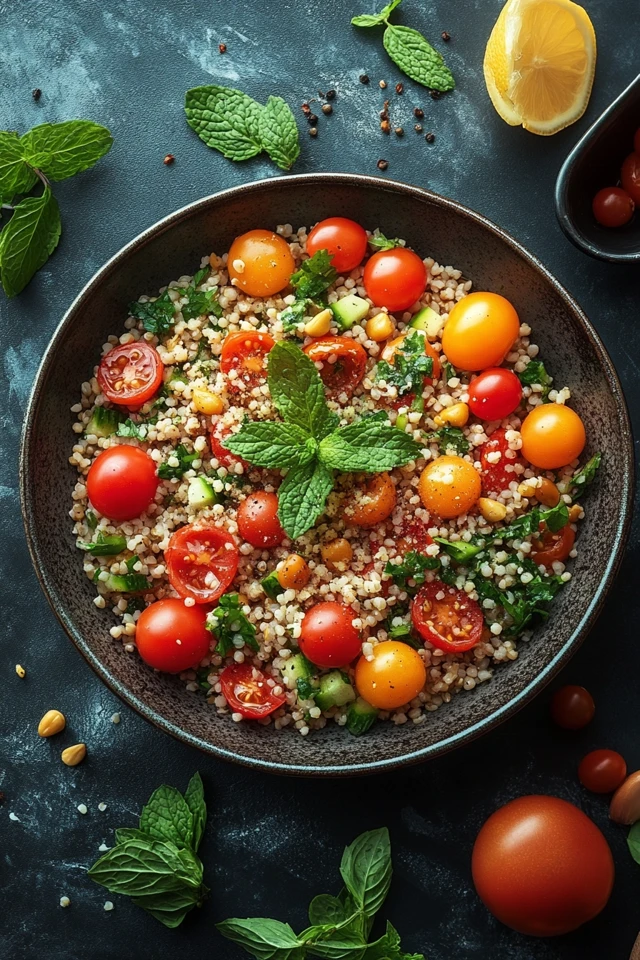
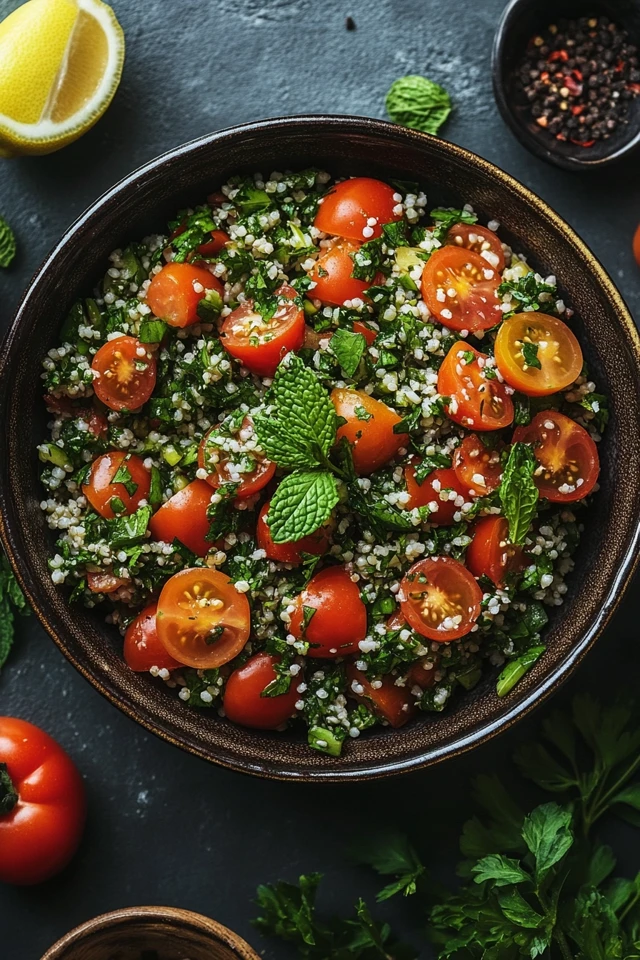
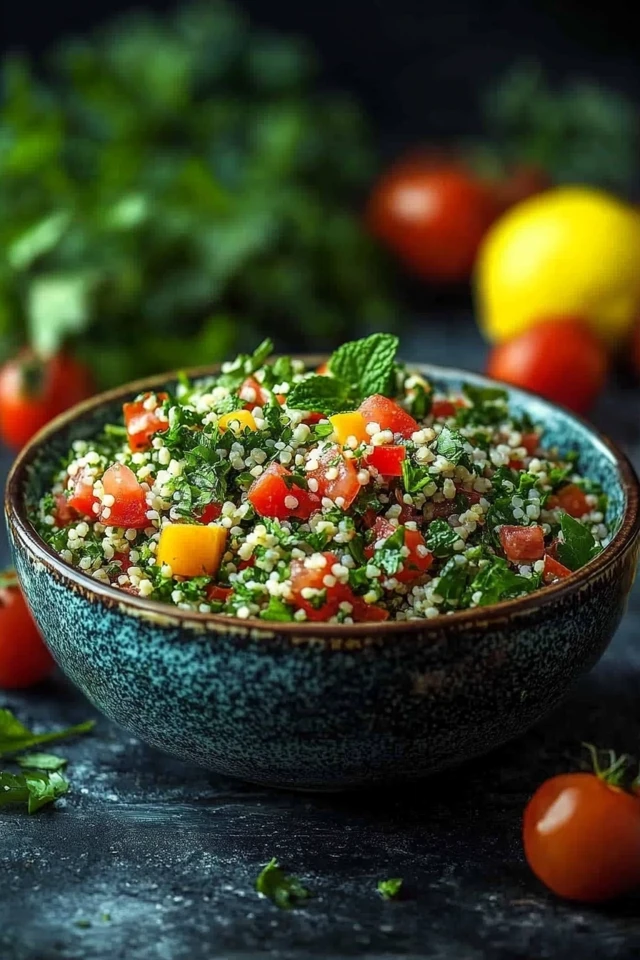
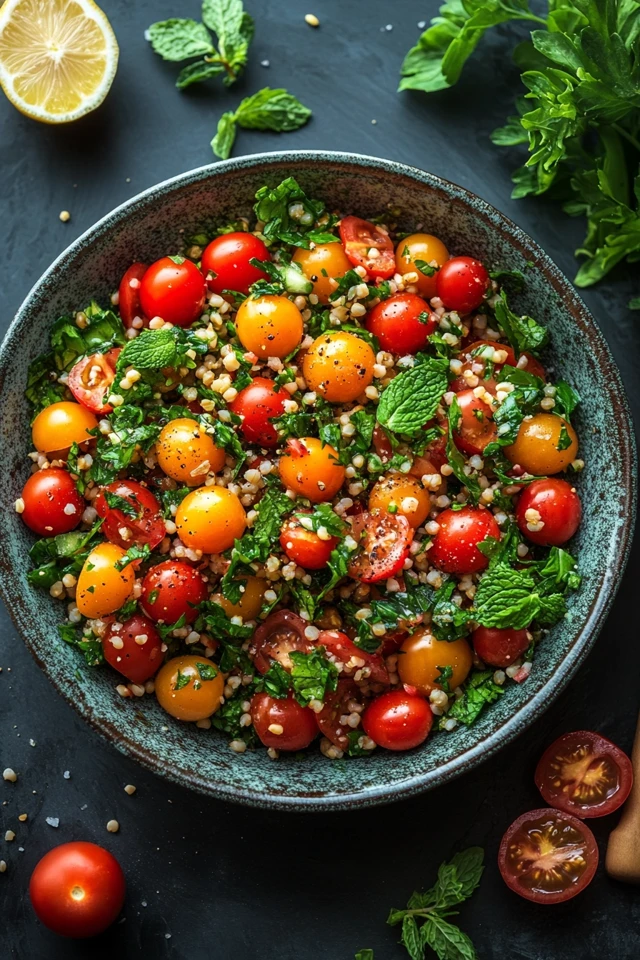
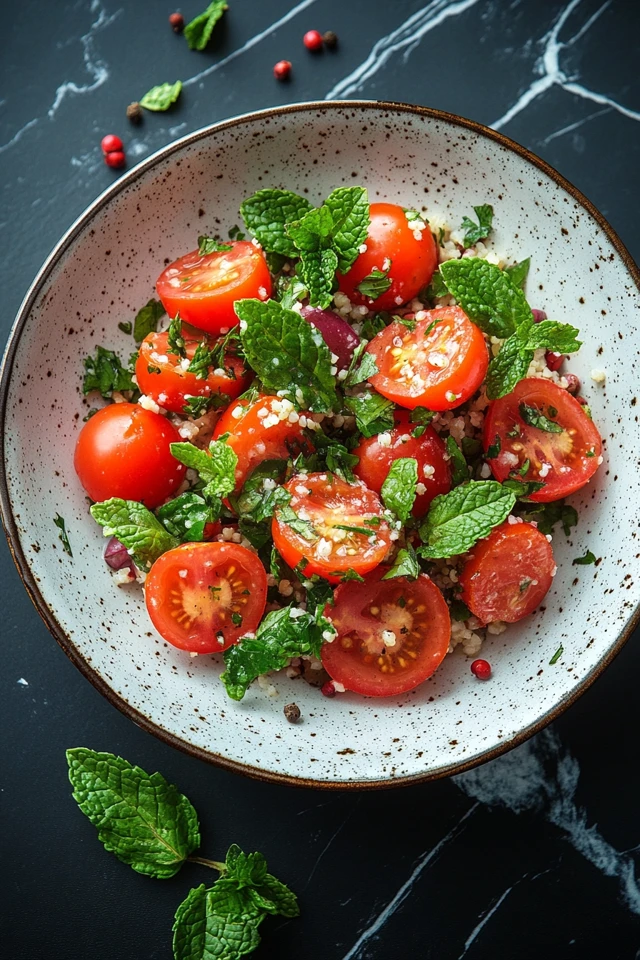
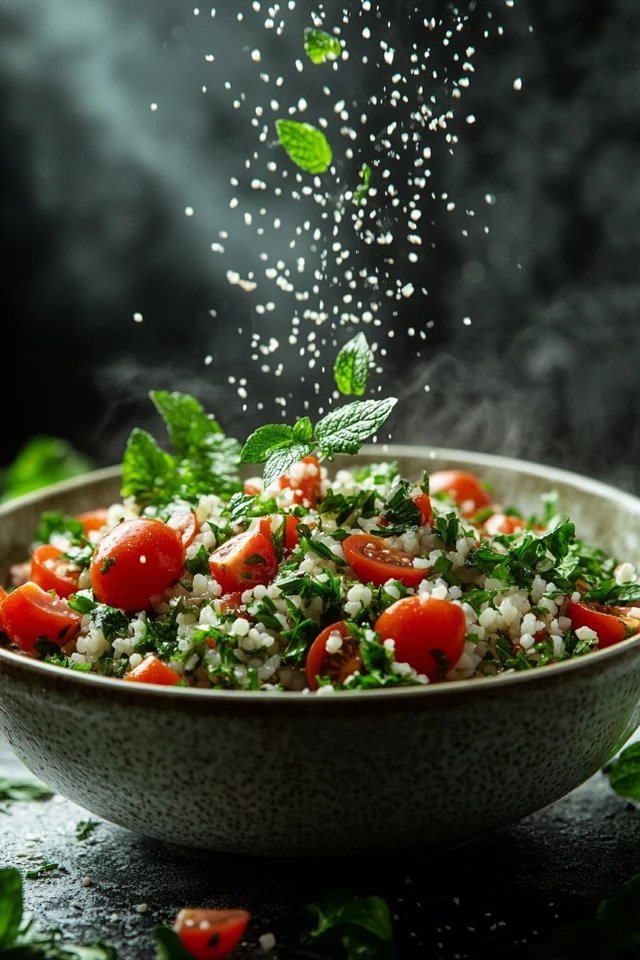
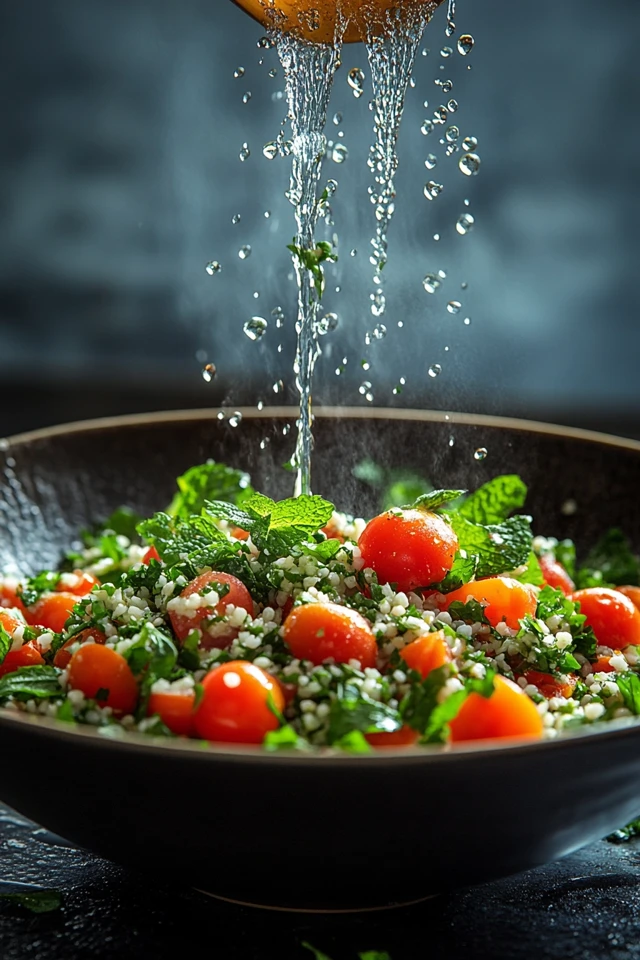
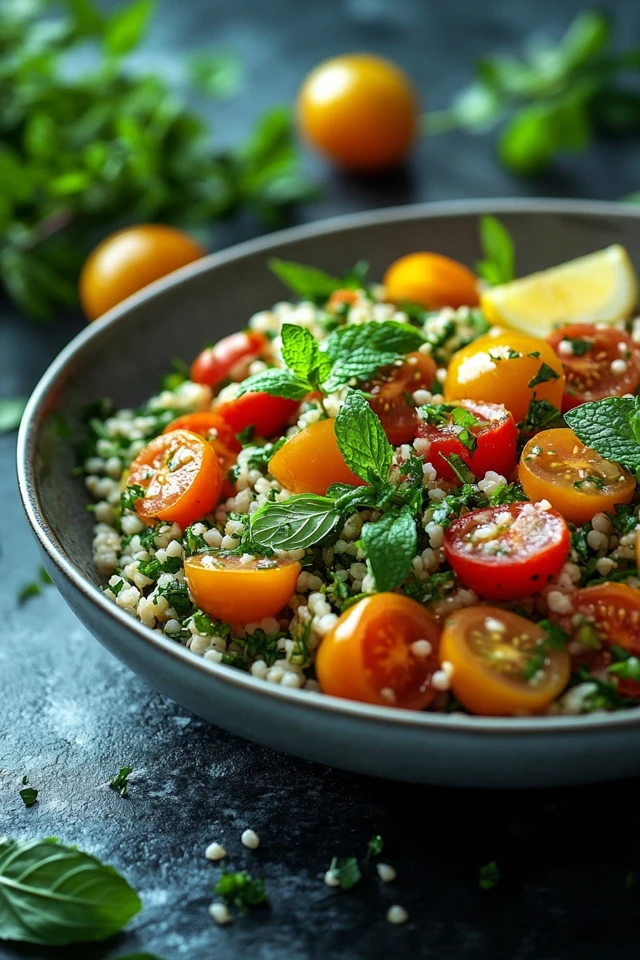
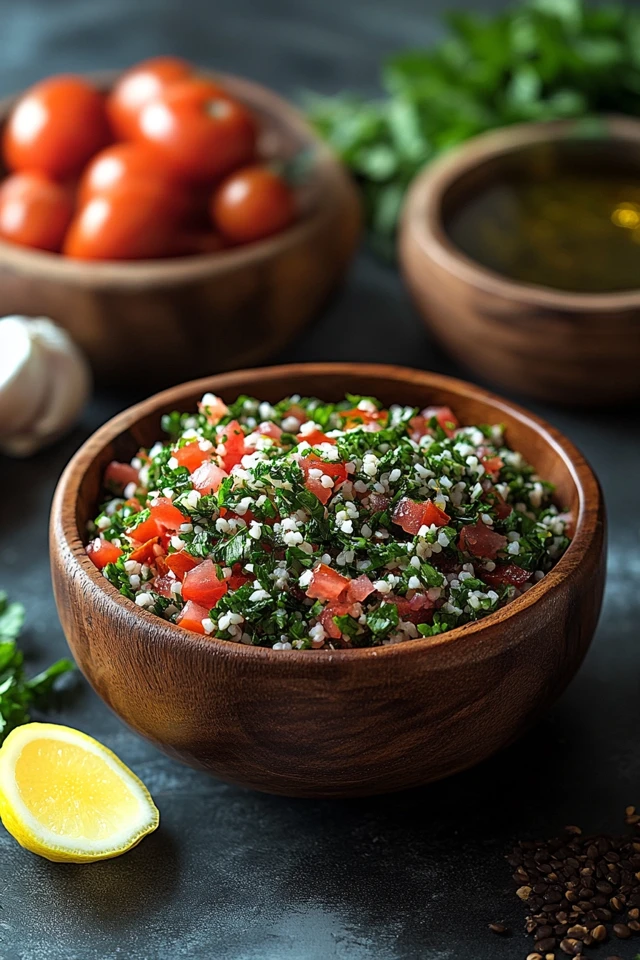
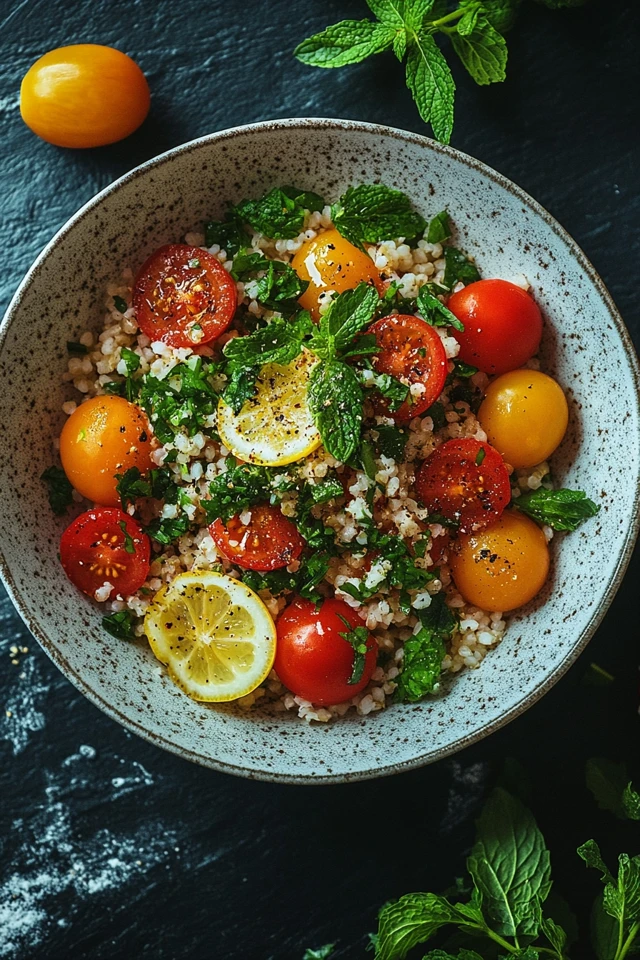
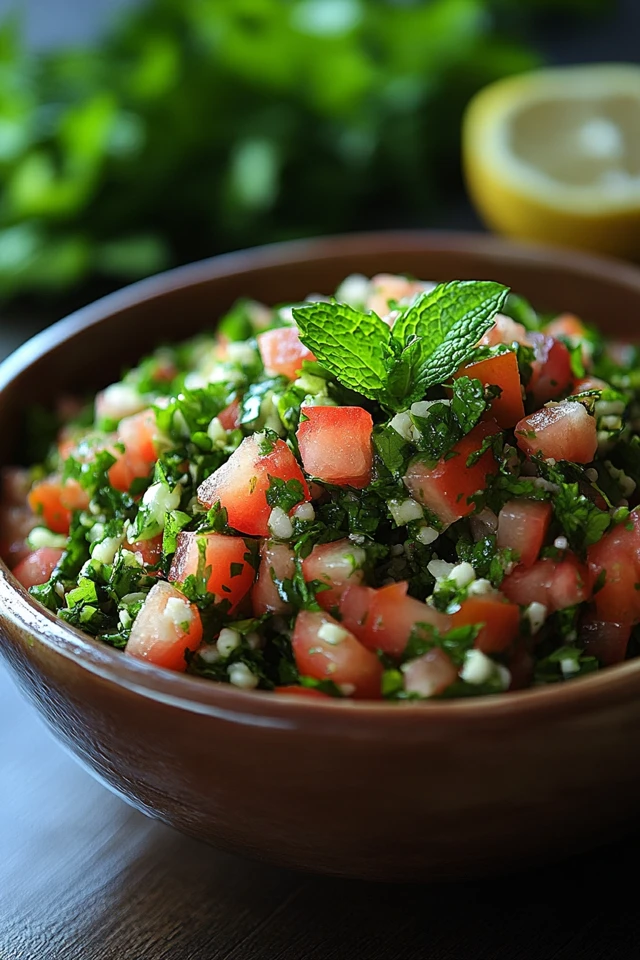
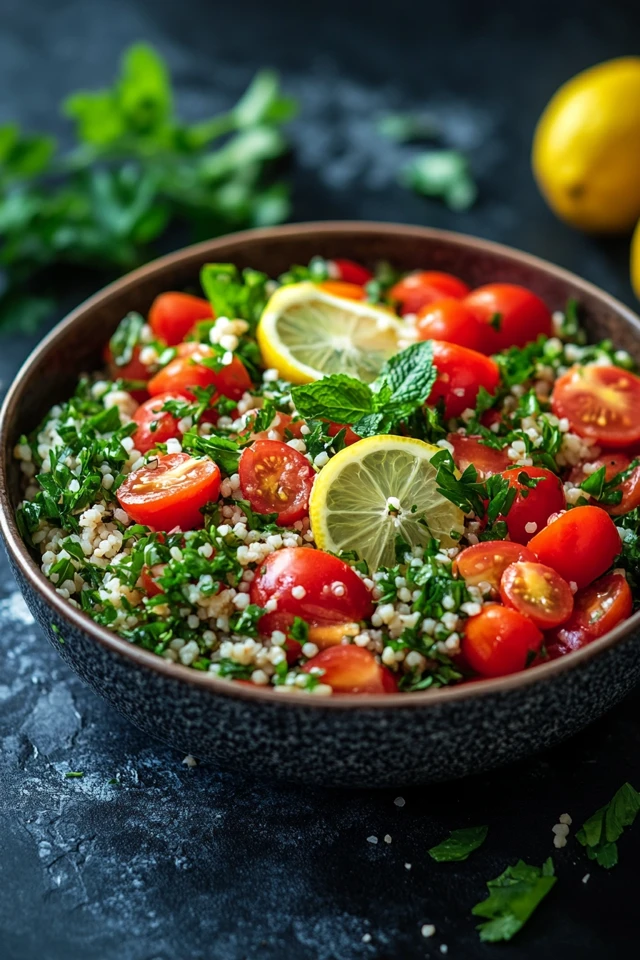
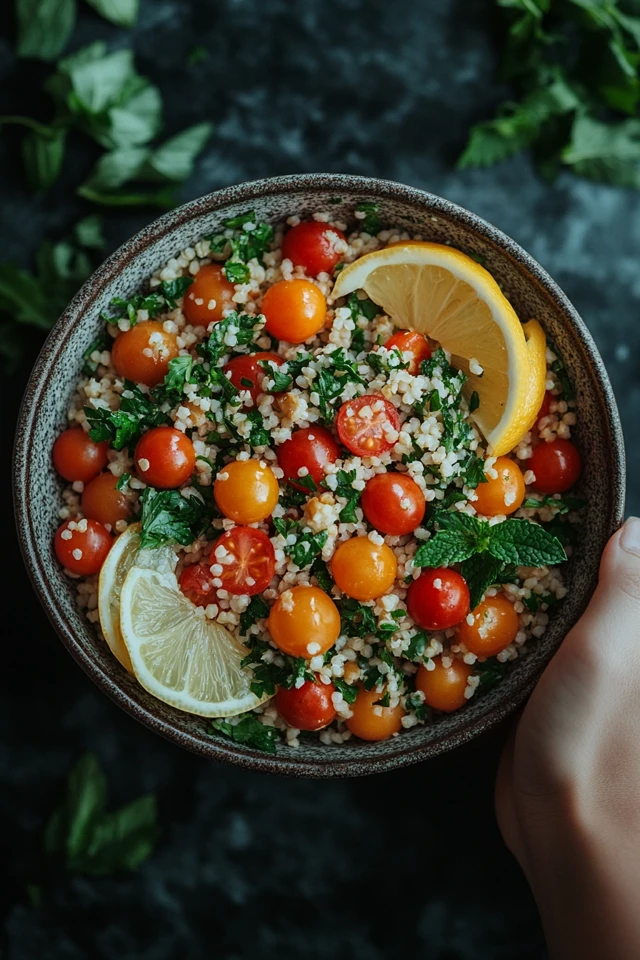
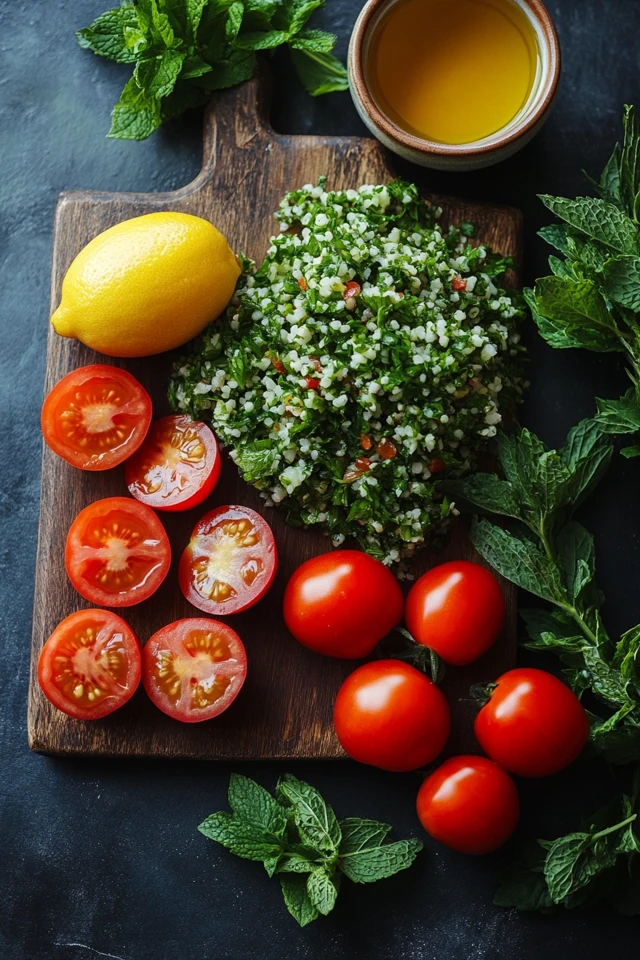
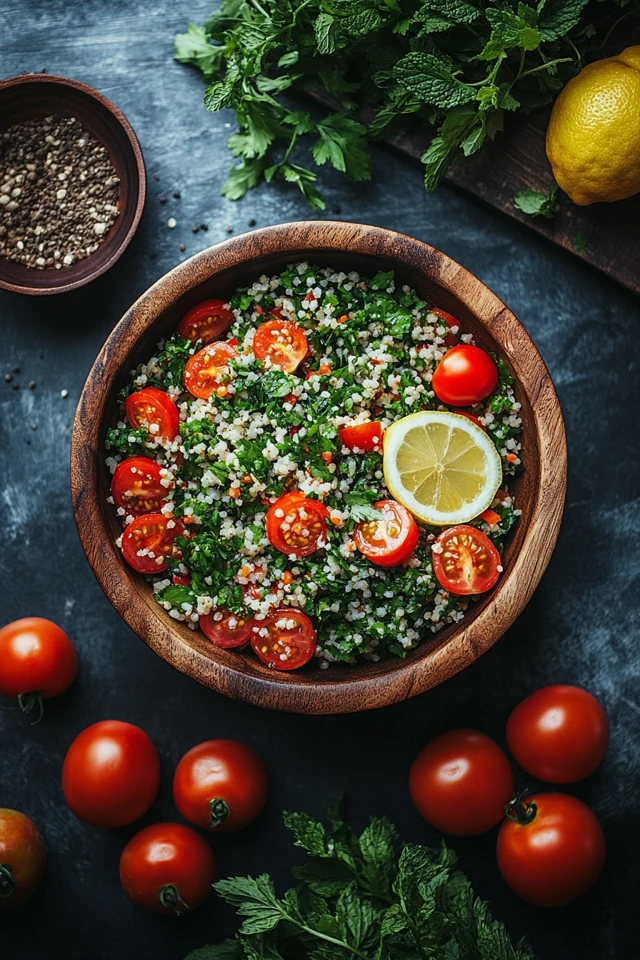
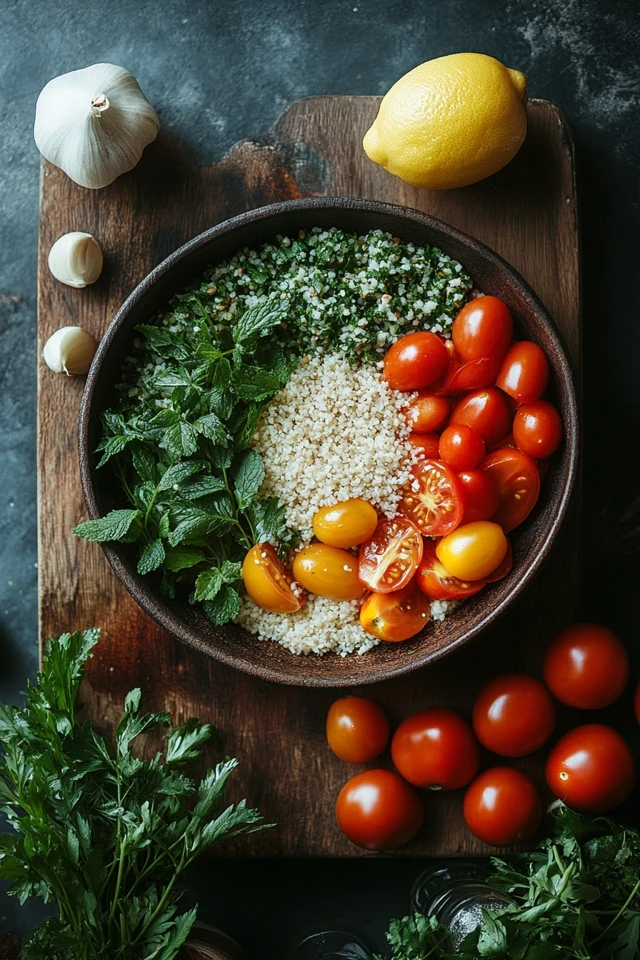
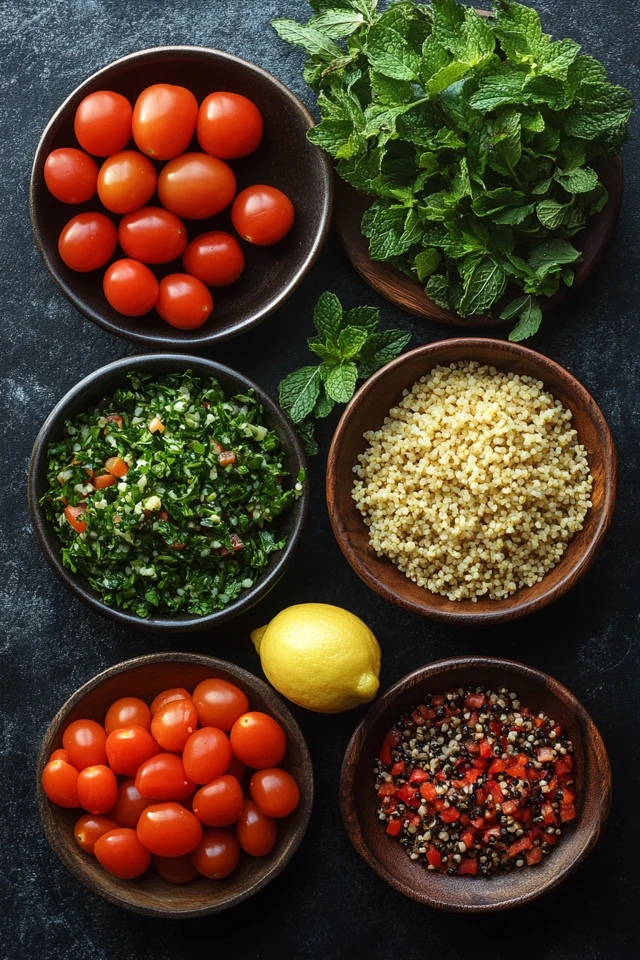
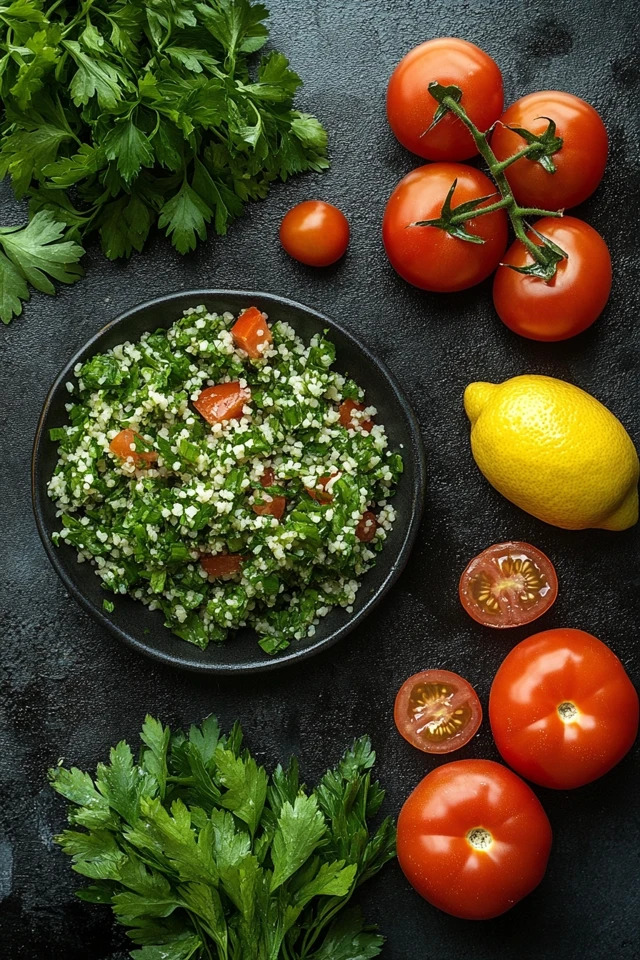
Frequently Asked Questions (FAQs)
1. Can I make this tabbouleh ahead of time?
Absolutely! Lebanese Vegan Tabbouleh Salad can be prepared a day ahead. Store it in an airtight container in the refrigerator. The flavors will deepen overnight, making the salad even more delicious. Just give it a good stir before serving.
2. What can I substitute for bulgur wheat?
You can substitute bulgur wheat with quinoa or couscous for a gluten-free option. Both alternatives provide a similar texture and absorb flavors well, making them excellent replacements in tabbouleh.
3. Is this recipe gluten-free?
Yes! By using gluten-free grains like quinoa or couscous instead of bulgur wheat, and ensuring all other ingredients are gluten-free, you can easily make this tabbouleh gluten-free. Always check labels to confirm the gluten-free status of store-bought products.
4. How can I make the salad more flavorful?
To enhance the flavor of your tabbouleh, consider adding a splash of olive brine for a tangy depth, or incorporate a pinch of sumac for a lemony tang. Freshly ground black pepper and additional herbs like dill or oregano can also elevate the taste.
5. Can I add more vegetables to the tabbouleh?
Absolutely! Feel free to incorporate additional vegetables like diced red bell peppers, sliced radishes, or even roasted sweet potatoes to increase the nutritional value and add more texture to your salad.
6. How do I prevent the bulgur from getting too soggy?
Ensure you use the right amount of water when soaking the bulgur. Once it has absorbed the water and softened, drain any excess moisture thoroughly. Adding the dressing just before serving also helps maintain the salad’s fresh and crunchy texture.
7. Can I add protein to make it more filling?
Yes! Add protein-rich ingredients like chickpeas, grilled tofu, or roasted lentils to make the salad more filling and nutritionally balanced. These additions not only boost the protein content but also enhance the overall texture and flavor.
8. How do I store leftovers?
Store any leftover tabbouleh in an airtight container in the refrigerator for up to 4 days. The salad may become more moist over time, so consider adding a little extra lemon juice or olive oil when reheating or serving to refresh the flavors.
9. Can I make a creamy version of this salad?
While traditional tabbouleh is known for its fresh and light qualities, you can create a creamy version by adding a dollop of vegan yogurt or a spoonful of tahini to the dressing. This will give the salad a rich and creamy texture without compromising its freshness.
10. What can I serve alongside this tabbouleh?
Serve your Lebanese Vegan Tabbouleh Salad alongside other Middle Eastern dishes like hummus, baba ganoush, falafel, or warm pita bread for a complete and satisfying meal. It also pairs well with roasted vegetables or grilled proteins for added variety.
About the Author
Welcome to Vegan & Plant-Based Kitchen! I’m Julio Arco, a passionate vegan chef dedicated to creating delicious, easy-to-make plant-based recipes that nourish both body and soul. Since embracing a vegan lifestyle in 2010, I’ve been on a culinary journey to explore the endless possibilities of plant-based cooking. From vibrant salads to hearty mains and indulgent desserts, my mission is to inspire and empower you to embrace a compassionate and healthy lifestyle through wholesome food.
Join me on this journey as we explore diverse flavors, experiment with fresh ingredients, and celebrate the beauty of plant-based living. Let’s create, share, and enjoy the goodness of vegan cooking together!
Disclaimer: This blog post is intended for informational purposes only. Always consult with a healthcare professional before making significant changes to your diet.

